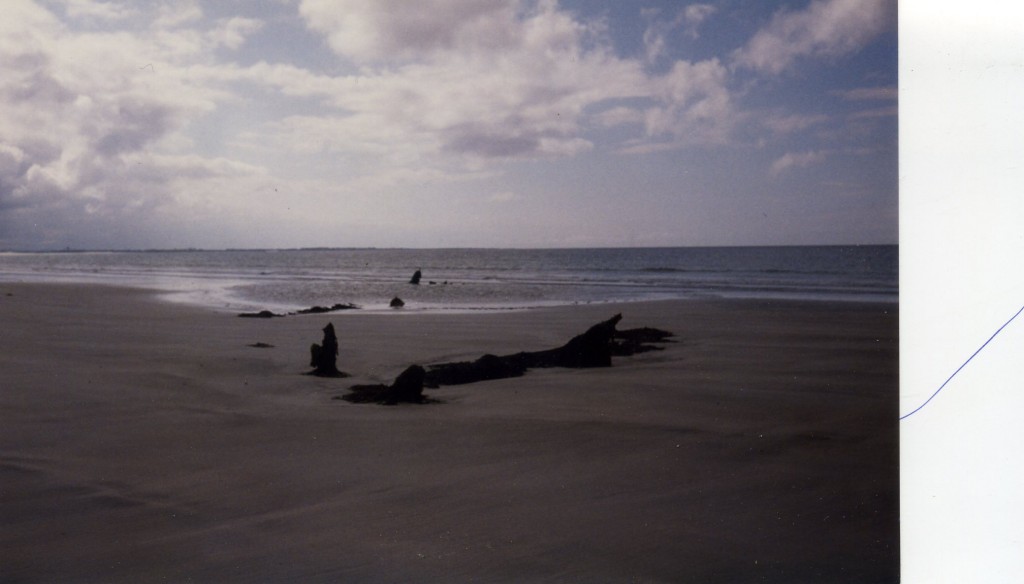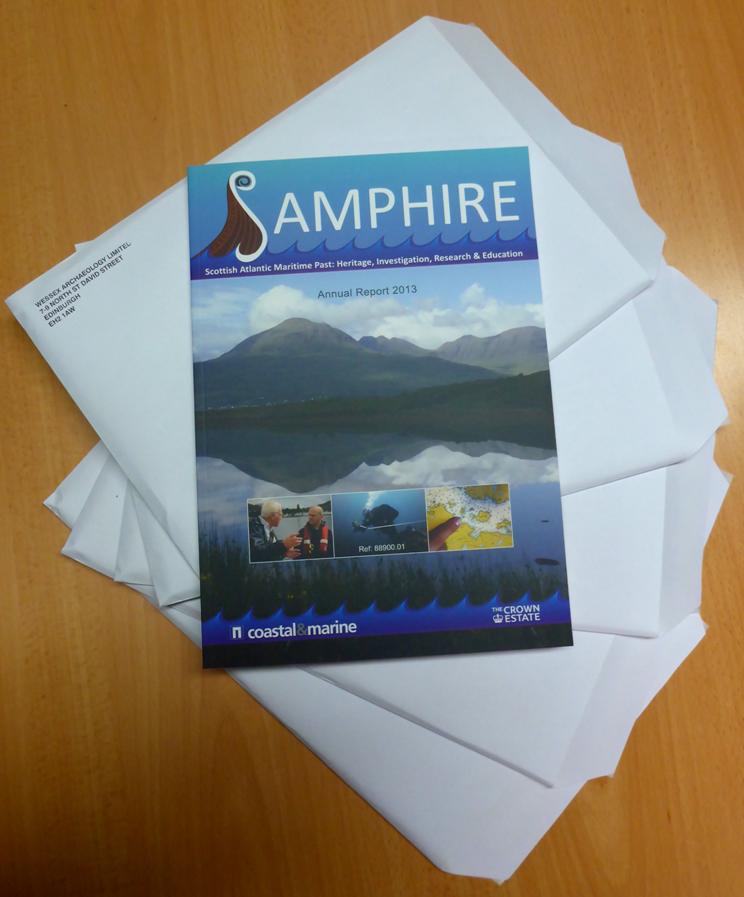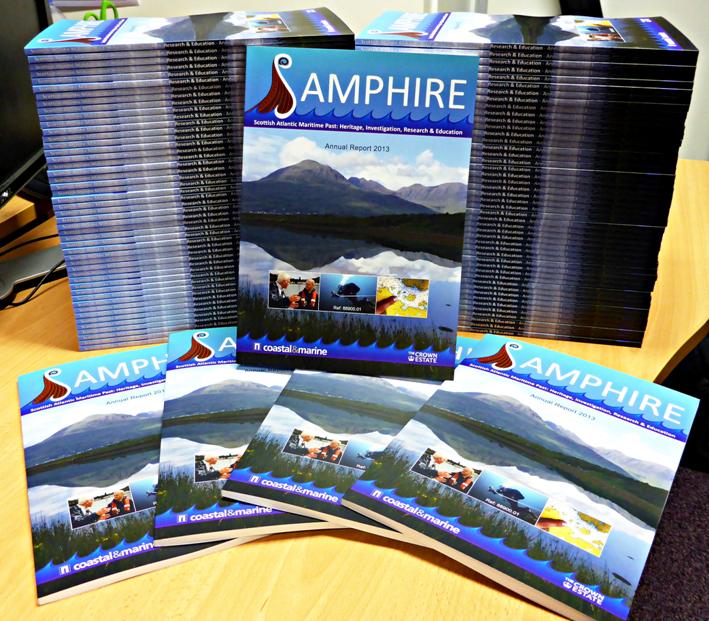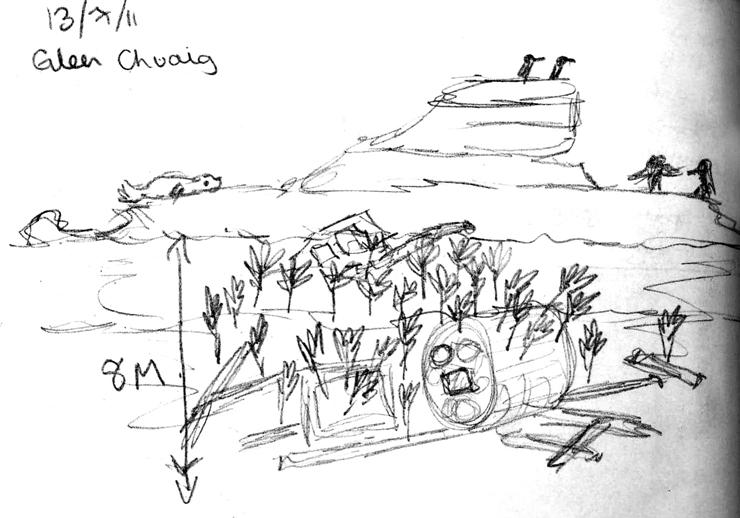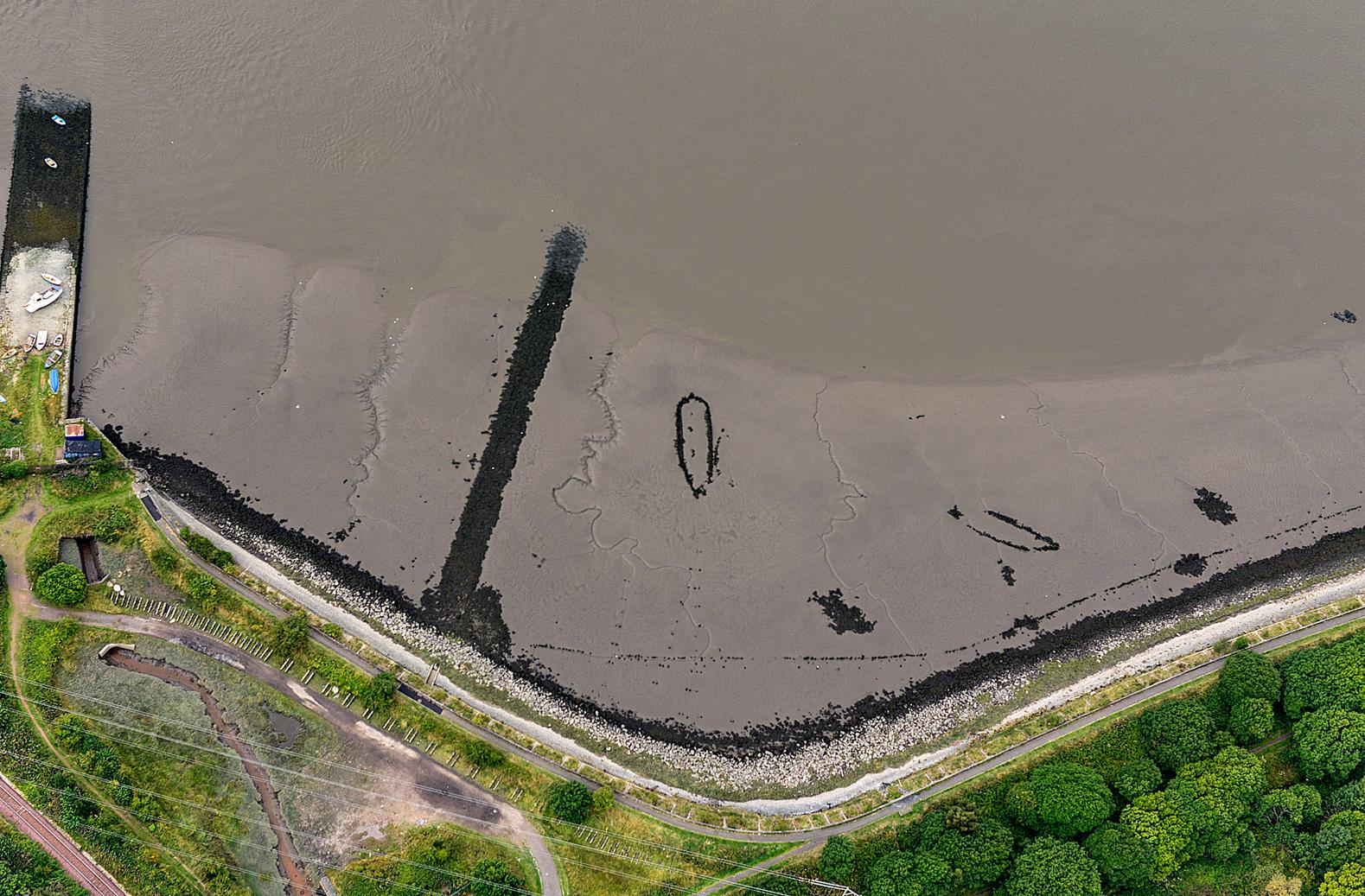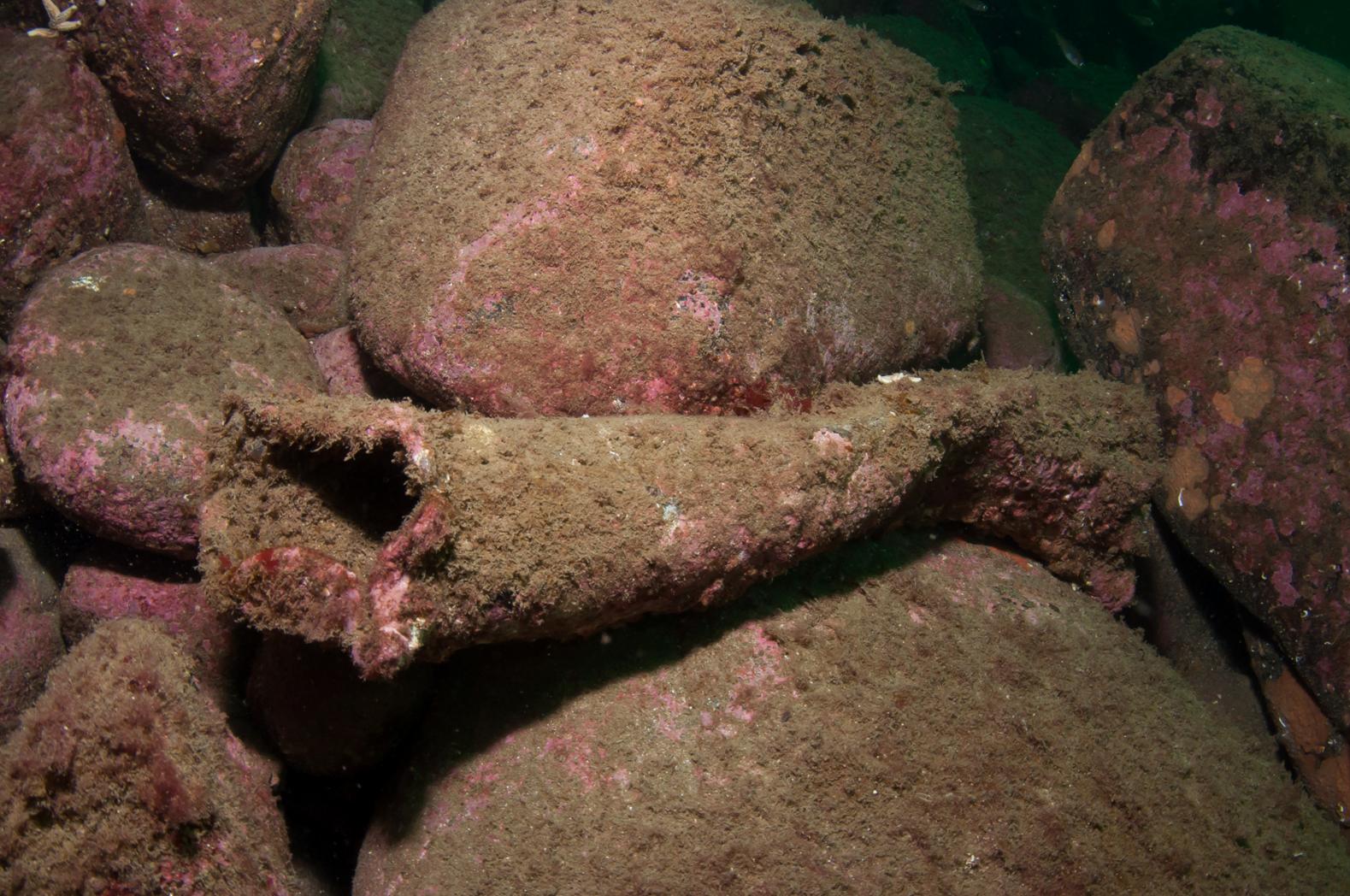Project SAMPHIRE is investigating two wrecks in the Outer Hebrides. One report is of a possible Birlinn the other a sailing vessel lost in 1877, the James A Wright. The story was recently reported in the Stornoway Gazette.
Tag Archives: SAMPHIRE
SAMPHIRE in the Stornoway Gazette!
An article on Project SAMPHIRE has been featured in the Stornoway Gazette! They are also planning a follow-up piece with more detailed information on the marine archaeological sites that have been found in the Outer Hebrides so watch this space!
Two more years of SAMPHIRE!
Today the Project SAMPHIRE team has issued an official press release announcing the successful completion of the first season and the award of funding for 2014/2015. The Crown Estate has announced a further seventy-five thousand pounds over two years, allowing the Project SAMPHIRE team to continue their investigations on the west coast until the end of 2015. This takes the total amount to over a hundred thousand pounds.
Over the last year the SAMPHIRE team has been meeting with local people on the west coast – including harbour masters, coastguards and diving enthusiasts – asking them to share their knowledge of anything interesting or curious beneath the water. This has led to the discovery of more than 40 archaeological sites including wooden shipwrecks, cannons, ancient anchors, fish traps and more recent small fishing vessels. A digital copy of the report has now been released containing a detailed account of the discoveries.
Some of the most notable sites investigated over 2013 include:
- A series of metal-hulled shipwrecks near Loch Torridon from the 19th/ early 20th centuries;
- Wreckage from a large unidentified 19th century wooden ship wreck near Kinlochbervie Harbour and a similar site at Loch Laxford;
- A ballast mound in the shape of a boat near Lochinver of unknown date;
- Remains of two early 20th century steam drifters on the beaches of the Isle of Lewis and near Applecross;
- A large 17th or early 18th century anchor spotted in the garden of a house near Kinlochbervie which we were subsequently able to trace back to its discovery by a trawlerman who was able to give us coordinates for where it was found and which is thought to indicate a wreck site;
- A Napoleonic cannon on the main street of Shieldaig, well-known to locals but mistakenly thought to be from the Spanish Armada and previously unknown to archaeologists; and,
- Two World War II flying boats on the seabed near Oban.
This year the team plans to work with communities around Oban and the Inner Hebrides but is also asking the public to report any previously unrecorded marine archaeological sites from other parts of Scotland, particularly on the west coast.
The 90-page report has been distributed to individuals who made significant contributions to the project and also to community archives in Skye and the Highlands to complete the information exchange. The team’s findings will also be made available through the RCAHMS archive.
Project SAMPHIRE is led by WA Coastal & Marine in partnership with RCAHMS and Flinders University, and funded by The Crown Estate.
Storms – 16th January 2014
The SAMPHIRE team has been investigating several intertidal wreck sites over the course of 2013. The recent storms have removed much of the beach sand around Scotland’s coast and this has led to numerous archaeological discoveries throughout Great Britain and Ireland.
- A shipwreck was newly exposed and excavated in Newquay
- A wreck dating to 1903 was uncovered in Ireland
- In Wales, a prehistoric forest dating to 10,000 years ago was exposed, along with two cannon from the Napoleanic Era
If you have come across any newly exposed wrecks or similar material this winter we would love to hear it and we may be able to help you investigate with professional archaeologists.
Storms like these also have the potential to erode and damage archaeological sites on land. Prehistoric sites throughout Scotland and Ireland have been impacted by the recent storms including an Iron Age burial in Shetland.
And a coastal midden in Ireland.
Scottish Coastal Archaeology and the Problem of Erosion (SCAPE) is particularly concerned with coastal archaeological sites damaged by storms and erosion. Further information is available at their website.
SAMPHIRE Report 2013
Christmas has come early this year for the SAMPHIRE team and there was great excitement in the Scottish office of WA Coastal & Marine as we unwrapped packages containing 100 bound copies of the SAMPHIRE 2013 Annual Report. These 85 page reports give a summary of all the exciting discoveries of 2013 and a background on what we are trying to achieve with this project, supported by The Crown Estate. We will be posting these out in the New Year to those maritime community members on the west coast of Scotland who have made significant contributions to the project over the last year. We will also be sending copies to RCAHMS and to other community archives on the west coast. To help spread the word as far as possible we will also be posting the report on this website in a digital format shortly.
Investigating unrecorded wrecks in Chuaig Bay, Wester Ross
The photo shows one of several previously unknown wreck locations near Chuaig Bay recorded through community engagement undertaken for the SAMPHIRE project. This location was first mentioned by locals in Shieldaig as the site of the SS Sheila, an early MacBrayne ferry. After we had finished our diving in the area we were given more detailed information by two divers from the Aberdeen Sub-Aqua Club. John and Jo Beaton discovered the wreck in 2011 and kindly provided us with accurate coordinates, a beautiful sketch, several photos and a detailed description.
Review of all available information now suggests that the Sheila is probably at another location 500 metres to the south of this wreck, on the edge of Chuaig Bay. Another possibility is that is that this could be part of the wreck of the Hersilia whose loss is recorded at the island in 1916 and which has never been located. The Hersilia was an armed iron naval yacht built in 1895 and registered in Leith. It was 52 metres long and sank at Chuaig Island in 1916.
Kincardine Bridge Ship Graveyard
We conducted an aerial survey this week and will be poring over the photos of archaeological sites on the west coast for the next few days. We flew from Edinburgh and saw some incredible places on the way including the ‘Kincardine Bridge Ship Graveyard’, a collection of up to 13 vessels in the intertidal flats between the bridges. This photo, taken at low tide, shows two of the ships clearly.
For more information see:
https://canmore.rcahms.gov.uk/en/site/147369/
and
Newly discovered Scottish wreck site
Another newly discovered shipwreck has been reported as part of the SAMPHIRE community project! Wreck material has been discovered at Eilean nan Roin, near Kinlochbervie, by two of our key community informants, recreational divers, who have reported a number of new discoveries to us already this year. The divers contacted us after unexpectedly discovering a cache of copper bolts in a gully while diving to free their anchor on the 13th August. They have provided us with a set of photographs of the artefacts in situ on the seabed and exact coordinates. Copper bolts were used in the construction of 19th century wooden-hulled ships. They were generally used below the waterline.
We don’t have a definite identification for the wreck yet. There are two unlocated recorded losses in the RCAHMS database in this area, the Mersy, a wooden schooner of 188 tons built in 1839 and lost in 1878 and the Gem, also a wooden schooner, of 60 tons built in 1852 and lost in 1874. The diameter of the bolts is quite large and suggests that they may be from a larger vessel than either of these.
SAMPHIRE takes to the air!
Land, sea… And now air! SAMPHIRE takes to the skies over western Scotland! Dr. Jonathan Benjamin is today out and about with the RCAHMS aerial survey team to conduct a photographic survey of some of the sites we’ve had reported this year. This image shows the high-grade cameras we will be using. Stay posted for more results!
Check out our other aerial surveys in Scotland:
- Aerial Survey of the Outer Hebrides
- Partially submerged prehistory
- Fishtraps at Hartavagh, South Uist
- The full report can be downloaded here.
Loch Laxford
The SAMPHIRE team had reports of two previously unrecorded wrecks in Loch Laxford. One of these is reported to be a slate wreck. Local divers have reported seeing the outline of a ship with its timbers projecting from the sand between two of the islands in the loch. The second wreck lies at the north side of the loch and we were able to find the sandy gully in which it lies. There are a variety of artefacts in this gully, including lead scuppers, a large anchor, bottles and machinery. As well as the images and video in this post, you can see our blog from the day we surveyed the location.
There have been few wrecks recorded as lost in Loch Laxford and these include the Phoenix the Helena and the Charlotte Mackenzie.

